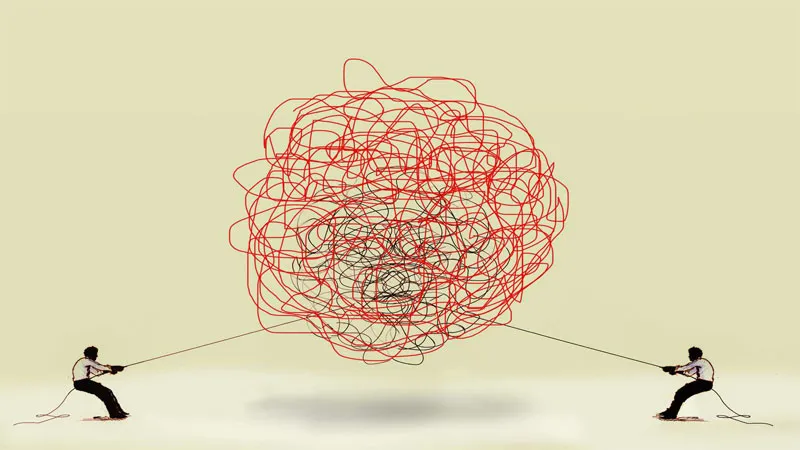Vision, Alta Narrative, and the Collapse of Agency
This article examines the Iranian opposition’s chronic failure to establish domestic legitimacy in the face
of a weakened yet resilient regime. Drawing on legitimacy theory (Beetham, Scharpf) and literature on
contentious politics (Tilly, Bayat), it argues that the opposition’s inability to articulate a future-oriented
vision and construct an Alta narrative, understood as a unifying and agency-generating national story, has
prevented it from converting public discontent into political power. Particular attention is paid to the
reformist referendum proposal, the self-inflicted damage of the most visible royalist figure’s recent
political missteps, and the impact of perceived alignment with foreign military actors. The article
concludes that without a paradigm shift toward coherent vision, inclusive narrative, and domestic
organizational anchoring, the opposition will remain incapable of challenging the regime’s monopoly on
political legitimacy.

Introduction
Iran’s political sphere in 2025 is defined by a dual legitimacy crisis. The regime’s normative authority has
been eroded by decades of repression, economic deterioration, and governance failure, while the
opposition has failed to construct an alternative with sufficient credibility to mobilize the public. This is
not a zero-sum process. Legitimacy is not automatically transferred from a delegitimated state to its
challengers. It must be actively built through vision, narrative, and agency.
Beetham’s tripartite model of legitimacy, which includes normative justifiability, expressed consent, and
conformity to accepted rules, remains a useful framework.¹ Scharpf’s distinction between input
legitimacy, understood as “government by the people,” and output legitimacy, understood as “government
for the people,” further clarifies why opposition forces cannot rely solely on popular dissatisfaction.²
In
the absence of a future-oriented vision and an Alta narrative capable of uniting the population behind a
shared project, public grievances do not translate into mass political agency.
I. Theoretical Framework: Vision, Alta Narrative, and Agency
Vision refers to a concrete and actionable projection of a political future. In democratic transitions, vision
serves both as a destination and a mobilizing device. It is not merely aspirational but programmatic,
outlining institutions, policies, and processes by which change will occur.
The Alta narrative, as used here, describes a unifying and future-oriented national story. It operates at a
higher level than specific policy programs. It fuses values, identity, and collective destiny, binding
disparate social groups into a coherent political community.³ Unlike slogans or reactive rhetoric, an Alta
narrative is integrative and positions the population as the legitimate author of the political order to come.
Agency is the capacity of ordinary citizens to act effectively toward political change. Charles Tilly and
Sidney Tarrow emphasize that movements must create repertoires and infrastructures that lower the
perceived costs of participation.⁴ Asef Bayat has shown how, in authoritarian contexts, ordinary people
engage in “non-movements” when formal organization is absent, but such engagement only scales into
political transformation when linked to a unifying vision and narrative.
In combination, vision, Alta narrative, and agency form the necessary pillars of opposition legitimacy.
Without them, public discontent remains inert
II. Opposition Without a Future Vision
Across Iran’s political opposition, there is a persistent overemphasis on past grievances and historical
legitimacy claims, with little attention to an actionable vision for the country’s political, social, and
economic reconstruction. Non-royalist currents, including secular republicans and elements of the
reformist diaspora, have failed to outline institutional blueprints, transitional justice mechanisms, or
economic recovery plans in sufficient detail to inspire confidence.
This lack of vision is not simply a strategic oversight but a structural limitation. Without a clear future
destination, no Alta narrative can take root, and without that narrative, there is no sustained public
agency. The result is a cycle of mobilization and demobilization in which episodic protests flare and
dissipate without producing a coherent transition movement.

III. Foreign Aggression and the Legitimacy Trap
The regime’s confrontation with a foreign military aggressor has further altered the legitimacy calculus.
Even a weakened state can present itself as the guardian of territorial integrity in such moments.
Opposition actors perceived, accurately or not, as aligned with that foreign power lose nationalist
credibility. In the Iranian case, this perception has been amplified by public exposure to civilian casualties
in the regional conflict, which has made association with the aggressor politically toxic.
The regime has exploited this context to project itself as the defender of Iran’s sovereignty. Although this
does not restore genuine legitimacy in Beetham’s sense, it allows the regime to occupy the nationalist
high ground in the short term, further marginalizing the opposition.
IV. Reformist Calls for a Referendum
Within the reformist camp, a call for a national referendum on the future of the political system briefly
captured public attention. While framed as a peaceful and legalist pathway to change, the proposal lacked
operational clarity. There was no specification of the organizing authority, procedural safeguards, or
enforcement mechanisms in an authoritarian environment.
As a result, while the idea was symbolically appealing, it failed to resonate as a viable plan among the
wider population. Without an Alta narrative to contextualize the referendum as part of a larger and
achievable project, the proposal remained aspirational and ultimately inert.
V. Royalist Leadership and Political Self-Immolation
On the royalist side, the most visible leadership figure entered 2025 with an opportunity to consolidate
support but instead engaged in a high-profile convention abroad that became a turning point in the erosion
of his credibility. The gathering’s restricted access and selective participation reinforced the perception of
elite isolation from ordinary Iranians
More damaging was the prevailing perception that this leadership was politically aligned with a foreign
state then engaged in military action widely regarded in Iran as a threat to national sovereignty. In an
environment saturated with images of civilian suffering from that conflict, such perceived alignment
undermined both nationalist and moral claims. For many observers, the episode amounted to political
self-immolation, alienating even some long-standing supporters and reinforcing the view that this
leadership could not embody an inclusive Alta narrative for Iran’s future.
VI. Result: A Regime Without a Credible Challenger
The combination of non-royalist inaction, royalist missteps, perceived foreign alignment, and reformist
procedural vagueness has left the Islamic Republic without a credible domestic challenger. Both sides of
the legitimacy equation are in deficit. The regime lacks moral authority and genuine consent, while the
opposition has not demonstrated the organizational depth or vision to replace it.
VII. Toward a Paradigm Shift
Breaking the deadlock will require:
1. A detailed transition plan with clear institutional design, timelines, and enforcement mechanisms.
2. An inclusive Alta narrative that frames sovereignty, dignity, and democracy as Iranian national
projects.
3. Organizational structures with transparent decision-making and demonstrable accountability to
Iranian constituencies.
4. Neutral geopolitical positioning to avoid the legitimacy trap in moments of foreign aggression.
5. Mechanisms to build agency through low-risk participation and local network building.
Conclusion
Iran’s opposition suffers not only from the regime’s repression but also from its own failure to articulate a
future-oriented vision, construct an Alta narrative, and enable mass agency. In the absence of these
elements, even major political openings will not translate into a credible challenge to state power. Until
opposition forces can align vision, narrative, and agency in a manner rooted in domestic legitimacy, the
regime will continue to dominate the political field despite its own deep legitimacy crisis.
References
- 1. David Beetham, The Legitimation of Power (Basingstoke: Palgrave Macmillan, 1991).
- 2. Fritz W. Scharpf, Governing in Europe: Effective and Democratic? (Oxford: Oxford University
Press, 1999).
3.. 3. Benedict Anderson, Imagined Communities (London: Verso, 1983).
- 4. Charles Tilly and Sidney Tarrow, Contentious Politics (New York: Oxford University Press,
2015). - 5. Asef Bayat, Life as Politics: How Ordinary People Change the Middle East (Stanford: Stanford
University Press, 2013).
Dr. Kamal Azari
8/11/2025 Petaluma


